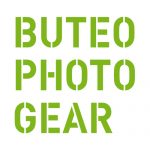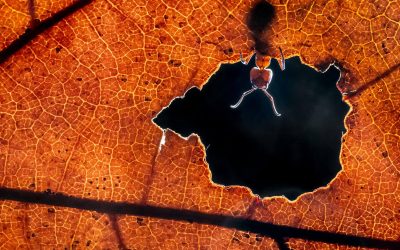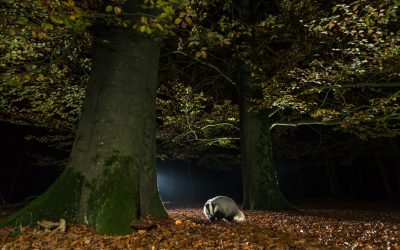Picture title: Alpensalamander © Luc Rooman | NPOTY 2023 Runner-Up | Category Underwater
Behind the Lens: Luc Rooman
…What inspires you to photograph? Are there specific themes, locations, or people that particularly intrigue you?
“What’s interesting about my story is that I used to be an avid carp fisherman. At one point, I thought: if I learn to dive, I can observe the fish, understand their behavior better, and figure out where they find their food. That would greatly improve my fishing techniques…
Name: Luc Rooman
Age: 59
Occupation: Snackbar owner
Current residence: Kieldrecht, Belgium
Social media: Facebook – Instagram

Behind the Lens: Luc Rooman
What inspires you to photograph? Are there specific themes, locations, or people that particularly intrigue you?
“What’s interesting about my story is that I used to be an avid carp fisherman. At one point, I thought: if I learn to dive, I can observe the fish, understand their behavior better, and figure out where they find their food. That would greatly improve my fishing techniques. I started taking diving lessons, mostly in France, where the lakes are often clear.
But something unexpected happened: instead of becoming a better fisherman, I became fascinated by the underwater world. The peace I found there was unparalleled. The first few times we went to Egypt, and that’s where the idea of taking underwater photos came to me. I started with a simple second-hand camera, and now it’s become a true passion.”

“Pike” © Luc Rooman
Location: Domaine Muisbroek
Description: Every spring, I spend a few months in freshwater. Domaine Muisbroek is ideal for photographing large pike in very clear water that are absolutely not shy around divers.

“Alpine Salamander” © Luc Rooman
Description:
A lot of patience is required, but in the end, you manage to get those photos.
How did you come to know about NPOTY and/or Nature Talks?
“For many years, I’ve participated in underwater photography competitions. Through online searches for various contests, I discovered NPOTY. What I find unfortunate is that photography festivals are usually held on weekends. As a fry cook, I work exclusively on saturdays and sundays, which prevents me from attending these events.”
Why did you think your submitted photo could be the contender for NPOTY? Can you tell us the story behind your submitted photo? What makes this photo special to you?
“The conditions in a designated diving area in Belgium worked in my favor, allowing me to capture this image that I was truly excited about. A beautiful salamander in the foreground, and most importantly, the one swimming away from above. The combination with the beautiful sunlight made me want to capture the silhouette immediately, without a flash.
The salamander looked upwards, completing my vision for the shot. I was confident, too, since this photo had already done well in other competitions. Many people ask me if the photo was really taken as it is, but it is, in fact, a composite image. When I do multiple exposures, I try to make them look as natural as possible. So, when people ask me that question, I know the photo is well-received! I always check the rules of a competition to see if the photo qualifies.”

“Frog” © Luc Rooman
Description:
I spent 4 hours in the water to let this brown frog get used to me. In the end, I managed to take a series of photos.
“For years, I’ve been preparing in the spring, closely following the amphibian migration. This allows me to know when frogs, toads, and salamanders head towards the water to mate, and they appear in large numbers. I also check online resources, such as Natuurpunt to track nature migrations as part of my preparation.”

“Barrel Jellyfish” © Luc Rooman
Location: Grevelingenmeer, the Netherlands
Description: Every year, in September and October, the Grevelingenmeer overflows with jellyfish. This particular specimen was already being eaten alive by a crab, while dying bioluminescent plankton cast a red glow. Combined with sunlight filtering through this barrel jellyfish, all these elements came together to create a striking and dramatic image.
“Over the years, I’ve taken so many photos that I don’t really have a favorite. However, I do remember in 2016, when a new technique emerged: shooting through an aluminum tube. This created a circular, reflective effect around the subject. In Indonesia, I photographed a clownfish using that technique. The fish had a parasite in its mouth, which resulted in a simple yet striking photo that had an instant WOW effect. I felt great about it as soon as I saw the image on my screen, even in a smaller format. I ended up winning several awards with that photo.
The big problem, however, is that last year I had a crash with my hard drives, which resulted in the loss of nearly all my photos up to around 2020. I still have the older drives, but they no longer boot up. Now I’m debating whether it’s worth the significant expense to professionally recover the high-resolution images, if that’s even possible. I’m still undecided. There were definitely some excellent shots among them. I’ve lost more than 100.000 photos! Photography isn’t my profession, but still… The photos I can share with you now are, unfortunately, only from the past few years.”
How would you describe your photographic style? Are there certain techniques or approaches that are characteristic of your work?
“I try to capture the underwater world in a unique way. Many people recognize my style and execution, but I find it difficult to describe my own style. I often photograph using a snoot [Editor’s note: A snoot is a tube-like attachment placed on the front of a flash to highlight the main subject]. This also helps me filter out any debris from the shot. However, I only use this technique when necessary, so it’s not something I apply all the time.”

“Lumpsucker” © Luc Rooman
Location: Oosterschelde, the Netherlands
Description: After more than 1750 dives in the Oosterschelde, I spotted a lumpsucker this winter with no less than 4 nests of eggs, which is very unique.

“Hairy Frogfish” © Luc Rooman
Location: Lembeh Street, Indonesia
Description: The photo was taken during the Hugy Cup 2023, captured using a snoot and illuminated with a blue light to achieve the effect.
“I definitely have to mention the floating debris and dust particles that need to be eliminated to achieve a ‘clean image.’ The snoot helps me quite a bit in this regard, and further elimination is often necessary in post-processing. I consider underwater photography to be one of the most challenging branches of photography. Before even entering the water, I’m usually carrying about 50 kilos of equipment: tanks, weights, camera, housing, always strobes. That’s already quite the challenge. I often photograph in the Netherlands, which means lugging all this gear over steep dikes. It’s a big task, but it’s something I’m fully committed to. I take good care of myself and keep in shape.
The biggest challenge, however, is visibility. Through experience, I know what animals I might encounter, but visibility is never guaranteed. I never know beforehand. Wind can naturally reduce visibility, but even on windless days, the water can be completely clouded. Fresh, enclosed waters, like lakes with significant algae growth, are often much cloudier up to about five meters deep. The warmer layers tend to have poorer visibility, yet I still prefer shooting in these warmer zones.
I used to be a carp fisherman, but photographing carp is incredibly difficult because they are extremely shy. The last time I photographed them was at the fishing pond De Put in Antwerp, which was the only chance to get a decent shot of them. Pike, on the other hand, have no natural enemies and will sometimes swim right up to my camera. Spawning fish are also relatively easy to approach.
Each season, I decide what’s interesting to photograph. I consciously search for that particular fish or amphibian for the month and fully focus my attention on it. I always follow the natural course of the seasons in my photography.”
How important is post-processing for your work? Can you tell us about your image editing and retouching process?
“I find post-processing very important. We live in a digital age, so why not take advantage of it? However, it shouldn’t ruin the original. It needs to stay true to nature. Within a few minutes, I edit my photos. I check the color, contrast, sharpness, and remove any distracting floating debris—that’s pretty much it. I aim to start with the best possible shot, so I need to apply minimal post-processing. I use Topaz, and for sharpness, I currently rely on Topaz Sharpen AI.
Sometimes, the floating debris even adds to the photo, giving it that extra dimension that makes it special. I experienced this recently with jellyfish. They looked like UFOs, and the floating particles gave the scene an almost otherworldly effect. It was amazing to see. As Cruijff once said, “Every disadvantage has its advantage,” and I try to make the most of that!”

“Japanese Sea Nettle” © Luc Rooman
Location: Veerse Meer, the Netherlands
Description: Every year in July and August, the Japanese sea nettle is plentiful in the Veerse Meer. During this time, swimmers need to be cautious, as they have very potent stinging cells.
“Last year, I was deeply engaged in a project involving alpine salamanders, which I was very proud of. I put together a portfolio of this work and submitted it to a competition. To my great surprise, I won a four-week trip to Papua New Guinea, including a dive package worth $19,000 for two people. Additionally, I won with these photos at the recent Lowlands Festival.”
Do you engage in photography full-time, or do you have other activities from which you derive your daily income?
“My wife and I run a snackbar in Belgium. Since it’s quite challenging to make a living from photography alone, I keep it as a hobby. I have a friend who also creates underwater photography and has tried selling his work on Werk aan de Muur. Unfortunately, he’s only sold a few photos, and it hasn’t been very successful.”

“Tristar 3” © Luc Rooman
Location: Aqaba, Jordan
Description: This photo was taken at the first International Aqaba Shootout in Jordan, where it was awarded a Special Jury Mention by the jury.
“By participating in numerous competitions, I gather a lot of ideas. I don’t copy, but I get inspired and develop my own style. I’m approaching 200 awards now, and I’m always thrilled to be placed in the top three. Besides underwater photography, I also take landscape photos, but I don’t find them special enough to pursue further. They won’t be competition entries. Recently, I went to Kalmthout for some photography and occasionally shoot from a hide. Tree frogs are also beautiful subjects. This year, I haven’t yet photographed the sundew, but it’s definitely something I’m interested in.
I’ve recently purchased a drone, which I plan to use for the introductory visuals in my annual presentation, transitioning from aerial shots to my underwater images. I also try to stay creative by acquiring accessories, like a 3D printer for backgrounds, though these often don’t yield successful results. People generally prefer reality. For example, a simple photo of a pike often performs better internationally than expected, while a photo I’m particularly excited about may not do well in competitions.”
“I have a Nikon D500 and a Nikon Z7ii. For macro photography, I often use the D500 with a special auxiliary lens. It also depends on the subject I want to photograph. For focus stacking shots, I still rely heavily on the D500 because it supports RAW files, which the Z7ii does not. However, I’ve become so accustomed to the live view of the Z7ii that I can’t imagine going without it. I remember the transition well. I won an underwater housing in a photography competition and ultimately chose the Z7ii to use with it. I haven’t regretted that decision for a single day.”

“Tristar 21” © Luc Rooman
Location: Aqaba, Jordan
Description: This photo was taken at the same Shootout in Aqaba and won first place in the Wrecks category in the United States recently.

“Seahorse” © Luc Rooman
Location: Oosterschelde, the Netherlands
Description: This photo was taken in the Oosterschelde using a snoot placed on the flash. The special effect of the snoot makes it look as though the seahorse is very angry.
“An athlete who doesn’t train won’t achieve much. Similarly, creating photos like mine only comes from being dedicated, practicing regularly, and staying critical. I always say: every photo can be improved, no matter how challenging it might seem. So, keep practicing and gaining experience. I dive year-round and build a kind of biological knowledge of the area I’m photographing and its inhabitants – what you can photograph each season and what you can’t. One mistake I made in the past was trying to photograph everything. Now, when I dive, I have a specific goal in mind. I also keep an eye on photos from competitions for inspiration. It helps keeping you engaged in the field and motivates you to stay active in the same circle. Sharing information and helping each other out also saves a lot of time.”












